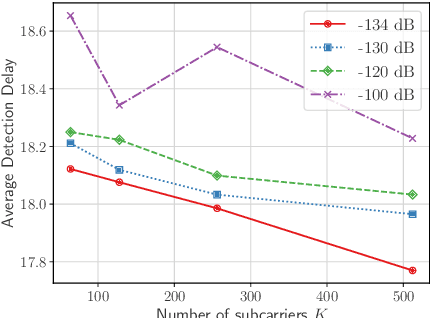George Stamatelis
Multi-Agent Actor-Critic with Harmonic Annealing Pruning for Dynamic Spectrum Access Systems
Mar 19, 2025Abstract:Multi-Agent Deep Reinforcement Learning (MADRL) has emerged as a powerful tool for optimizing decentralized decision-making systems in complex settings, such as Dynamic Spectrum Access (DSA). However, deploying deep learning models on resource-constrained edge devices remains challenging due to their high computational cost. To address this challenge, in this paper, we present a novel sparse recurrent MARL framework integrating gradual neural network pruning into the independent actor global critic paradigm. Additionally, we introduce a harmonic annealing sparsity scheduler, which achieves comparable, and in certain cases superior, performance to standard linear and polynomial pruning schedulers at large sparsities. Our experimental investigation demonstrates that the proposed DSA framework can discover superior policies, under diverse training conditions, outperforming conventional DSA, MADRL baselines, and state-of-the-art pruning techniques.
On the Detection of Non-Cooperative RISs: Scan B-Testing via Deep Support Vector Data Description
Nov 05, 2024

Abstract:In this paper, we study the problem of promptly detecting the presence of non-cooperative activity from one or more Reconfigurable Intelligent Surfaces (RISs) with unknown characteristics lying in the vicinity of a Multiple-Input Multiple-Output (MIMO) communication system using Orthogonal Frequency-Division Multiplexing (OFDM) transmissions. We first present a novel wideband channel model incorporating RISs as well as non-reconfigurable stationary surfaces, which captures both the effect of the RIS actuation time on the channel in the frequency domain as well as the difference between changing phase configurations during or among transmissions. Considering that RISs may operate under the coordination of a third-party system, and thus, may negatively impact the communication of the intended MIMO OFDM system, we present a novel RIS activity detection framework that is unaware of the distribution of the phase configuration of any of the non-cooperative RISs. In particular, capitalizing on the knowledge of the data distribution at the multi-antenna receiver, we design a novel online change point detection statistic that combines a deep support vector data description model with the scan $B$-test. The presented numerical investigations demonstrate the improved detection accuracy as well as decreased computational complexity of the proposed RIS detection approach over existing change point detection schemes.
Single- and Multi-Agent Private Active Sensing: A Deep Neuroevolution Approach
Mar 15, 2024



Abstract:In this paper, we focus on one centralized and one decentralized problem of active hypothesis testing in the presence of an eavesdropper. For the centralized problem including a single legitimate agent, we present a new framework based on NeuroEvolution (NE), whereas, for the decentralized problem, we develop a novel NE-based method for solving collaborative multi-agent tasks, which interestingly maintains all computational benefits of single-agent NE. The superiority of the proposed EAHT approaches over conventional active hypothesis testing policies, as well as learning-based methods, is validated through numerical investigations in an example use case of anomaly detection over wireless sensor networks.
Active hypothesis testing in unknown environments using recurrent neural networks and model free reinforcement learning
Mar 19, 2023



Abstract:A combination of deep reinforcement learning and supervised learning is proposed for the problem of active sequential hypothesis testing in completely unknown environments. We make no assumptions about the prior probability, the action and observation sets, and the observation generating process. Our method can be used in any environment even if it has continuous observations or actions, and performs competitively and sometimes better than the Chernoff test, in both finite and infinite horizon problems, despite not having access to the environment dynamics.
 Add to Chrome
Add to Chrome Add to Firefox
Add to Firefox Add to Edge
Add to Edge